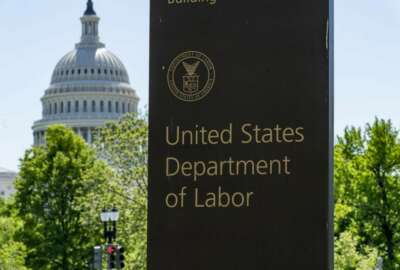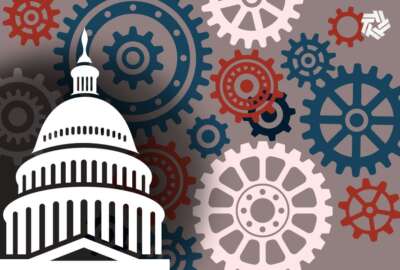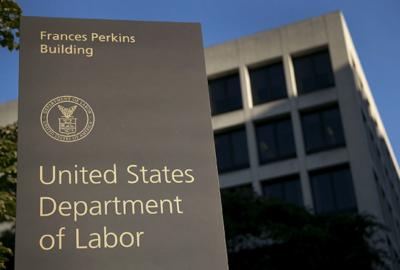Benefits.gov still riding the E-Government Act wave 20 years later
Mangala Kuppa, the director of business application services in Labor’s CIO’s office, said the agency hopes to continue to develop the portal using chatbots and...
As one of the original E-government, or Quicksilver initiatives during the Bush administration, Benefits.gov has epitomized much of what the E-Government Act of 2002 was aiming to accomplish.
Now 20 years later, the Labor Department manages access to information about over 1,100 benefits from 16 agencies on Benefits.gov. The site averages 1.5 to 2 million visitors a month and helps further the long-held goal of “no wrong front door” when working with the government.
Mangala Kuppa, the director of business application services in Labor’s CIO’s office, said the portal will continue to evolve under the guidance of the E-Government Act of 2002.

“We have done a lot of things in that space to make Benefits.gov very accessible. For example, there is a short, confidential set of questions that you can answer. It’s called Benefits Finder. So instead of looking through a thousand-plus benefits in our system, you could actually reduce it down to your personal situation. That’s one of the very well-used aspects of Benefits.gov,” Kuppa said on Ask the CIO. “We also recently incorporated chatbot technology to better assist the public who come looking for benefits sometimes. Some folks exactly know what they’re looking for. Some folks will come in, and they’re just like asking what benefits are available? We’re trying to cater to all of those different customers. We have made it available to the public, like categorization of benefits so that they can narrow it down in more natural pace.”
Kuppa, who took over managing DoL’s applications about three years ago, called Benefits.gov more like a library where you can go find information, but need to go to a book store if you want to own your own copy of the Grapes of Wrath or To Kill a Mockingbird.
The inability to apply or conduct online transactions has been one of the biggest shortfalls of not just Benefits.gov, but the entire E-Government Act over the last 20 years. Under the guide of the E-Government Act, agencies found success bringing together information to make it easier for citizens and businesses to find, but not take the next step in the process.
Other Quicksilver or E-Government initiatives, such as Grants.gov or Disasterassistance.gov, seem to give users the ability to apply from the main site. Meanwhile, other initiatives morphed into new initiatives like e-clearance became the new security clearance effort through the Defense Counterintelligence and Security Agency or the one-stop compliance site for businesses became businesslaw.gov and now is just part of the Small Business Administration’s website. Congress in October 2022 passed the One Stop Shop for Small Business Compliance Act of 2021 to create a “centralized website for compliance guides…,” provide a list of hyperlinks to small entity compliance guide and for each compliance guide link posted, provide the contact information for an individual who can “offer assistance to small entities with respect to the rules that are the subject of such guide,” wrote Greg Weber, a lawyer for Koprince McCall Pottroff, in a blog post from January.
Adding life events to portal
Kuppa said Labor fully understands the requirement for Benefits.gov users to have to go to another site to apply for the benefits is a shortcoming of the portal.
“I think that is some of the feedback that we have received from our constituents, saying that it’d be great if we could just apply, I think there are areas that we can actually make progress technology wise, like sending them to the website of that particular agency who provides that benefit. We do have to navigate a few policy areas as well in that space to make sure that ultimately, it’s not the Department of Labor, who is really governing that benefit application process,” she said. “It is the other agency that is the partner agency so there is more to come on that I think. I’m sure there’s more we can do in that space to expand on this.”
Labor already has demonstrated one important aspect of the application process, the use of digital signatures. The Office of Workers’ Compensation Program began using this technology in early 2022 for two specific forms.
While the ability to apply for benefits may still be a ways off, Kuppa said Labor isn’t only in maintenance mode for the portal.
She said over the next year or so Benefits.gov will add life events as part of the Biden administration’s goal to improve customer experience initiative.
She said focusing on the user’s experience is one example of how Benefits.gov has and will continue to evolve since it began in 2004.
“It’s definitely cloud native technology today, and we make use of everything that the latest and the greatest technology can offer. We also created the platform in such a way that we can actually diversify on the platform very easily. It’s not just Benefits.gov we use the platform for, but our DoL mission applications as well,” Kuppa said. “We spent a lot of time imagining and creating the platform in such a way that a lot can be reshared. One of the parameters also was that we wanted the cost proposition to be very palatable for partnering agencies. On an average, I think, it’s like under $100,000 for promoting the benefits that the agency offers, as well as all of the outreach that we perform.”
Kuppa said it’s clear Benefits.gov benefitted a great deal from the E-Government Act of 2002, providing Labor with a path to achieve the ultimate goal of providing a one-stop shop for citizens to find federal services.
“Generally, whenever we have an act or an executive order or something similar, what it does is it really focuses us on the things that we already know, but gives us the ammunition we need to act more quickly, and in a very natural organic way,” she said. “We start reacting to those acts, reacting to those executive orders and figuring out what is the best way to go about it. I think I see that not just from the creation of Benefits.gov back in 2004, but in a lot of collaborative systems that we have even within the Department of Labor. I tend to measure the success of a product based on the value it brings, and the value can only be measured by whether the intended customers or the users of the public are actually using it. The fact that we get 2 million-plus foot traffic every month, even today after 20 years, I think is a good sign.”
Copyright © 2025 Federal News Network. All rights reserved. This website is not intended for users located within the European Economic Area.
Jason Miller is executive editor of Federal News Network and directs news coverage on the people, policy and programs of the federal government.
Follow @jmillerWFED








